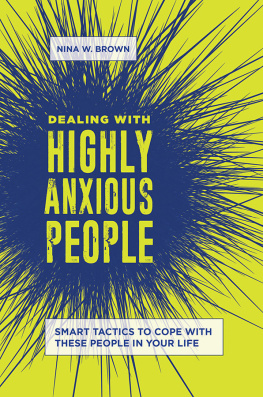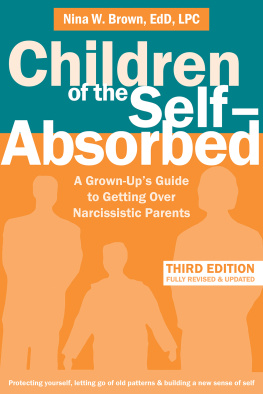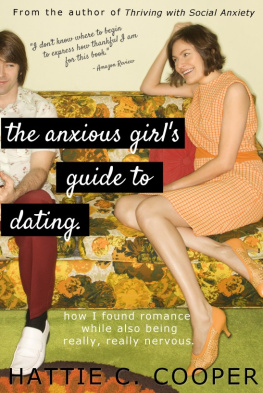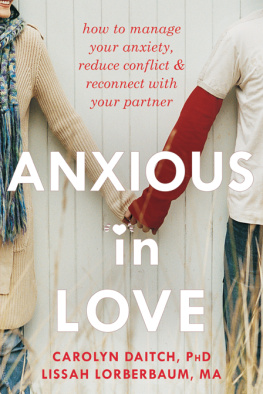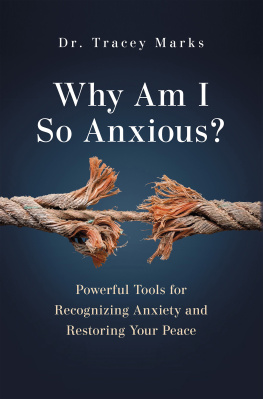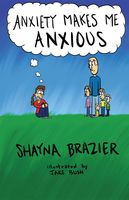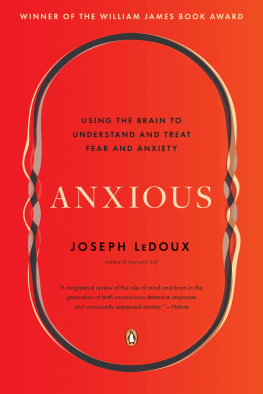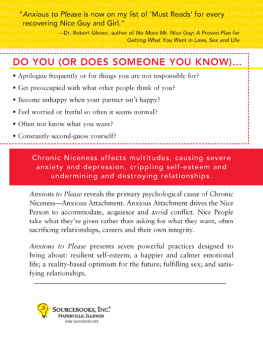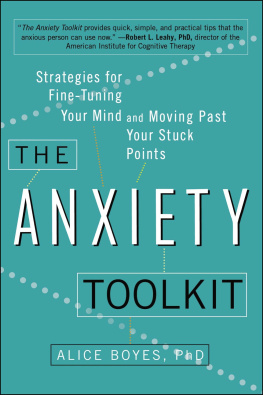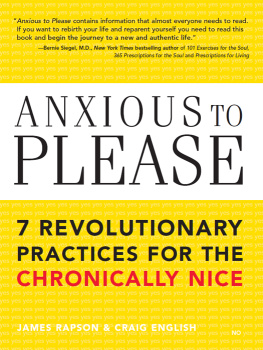Dealing with Highly Anxious People
Dealing with Highly Anxious People
Smart Tactics to Cope with These People in Your Life
Nina W. Brown

Copyright 2019 by Nina W. Brown
All rights reserved. No part of this publication may be reproduced, stored in a retrieval system, or transmitted, in any form or by any means, electronic, mechanical, photocopying, recording, or otherwise, except for the inclusion of brief quotations in a review, without prior permission in writing from the publisher.
Library of Congress Cataloging-in-Publication Data
Names: Brown, Nina W., author.
Title: Dealing with highly anxious people : smart tactics to cope with these people in your life / Nina W. Brown.
Description: 1st Edition. | Santa Barbara : Praeger, 2019. | Includes bibliographical references and index. |
Identifiers: LCCN 2019025598 (print) | LCCN 2019025599 (ebook) | ISBN 9781440867651 (hardback) | ISBN 9781440867668 (ebook)
Subjects: LCSH: Anxiety. | Self-help techniques.
Classification: LCC BF575.A6 B76 2019 (print) | LCC BF575.A6 (ebook) | DDC 158.2dc23
LC record available at https://lccn.loc.gov/2019025598
LC ebook record available at https://lccn.loc.gov/2019025599
ISBN: 978-1-4408-6765-1 (print)
978-1-4408-6766-8 (ebook)
23 22 21 20 191 2 3 4 5
This book is also available as an eBook.
Praeger
An Imprint of ABC-CLIO, LLC
ABC-CLIO, LLC
147 Castilian Drive
Santa Barbara, California 93117
www.abc-clio.com
This book is printed on acid-free paper 
Manufactured in the United States of America
Contents
The idea for this book emerged from an experience I had with a very anxious person where I was frustrated because it seemed that there was always something that kept them in a state of anxiety. If one problem was solved, another one quickly took its place, and I had to hear about every one of them. In addition, I was trying to work with another person on a project and this person wasnt ever satisfied that I could do what was needed without them constantly checking on my progress, telling me what to do and how to do it, and just interrupting me with their concerns. I was always having to stop what I was doing to answer them about something that was not important, but they just had to have me available at that moment.
I described the idea of writing a book titled Your Anxiety Is Driving Me Crazy, to my daughter and to several colleagues, and every one of them said that they knew what I was talking about. My daughter, who teaches advanced courses in a high school, described some of her students who were extremely bright but were constantly anxious about almost everything and every day there was something new to be anxious about, so they looked to her for answers and relief. My colleagues described family members, friends, and other colleagues with whom they had similar experiences. It was at that point that I realized that many of us did not know how to understand this kind of anxiety, that it was different from the debilitating anxiety that needs medication and treatment, and that there were times when we did not want to see that person or hear about what was making them anxious. There did seem to be a need for understanding and coping with the common everyday variety of the overly anxiousness of some people, and so the book was developed.
What I am trying to do in the book is to characterize the worlds of the four identified categories of anxious peoplethe Worrier, the Complainer, the Micromanager, and the Naggertheir impact on you and others, and hope to provide you with some understanding of their anxiety. Also described are suggestions for how we play into their anxiousness by our need and desire to be helpful, how we tend to be open to catching their anxiousness and other feelings, and how we can respond and react more effectively for ourselves and for them.
Throughout the book you will find practical and easily implemented interventions, ideas for coping strategies and skills, and procedures for self-reflection and self-understanding. Presented are ways of understanding yourself and how your personality and other characteristics may be possible contributors to your personal reactions to the anxious person in your life. Central to what is presented is the assumption that you want to maintain the relationship because of its importance to you that there are limits for your responsibility for the other persons anxiety, and suggest strategies to guide you on how to develop helpful responses to their anxiety. It is my hope that you will be able to be more effective in interactions with the anxious person in your life and that your stress of dealing with others anxiety will be reduced.
No book is written without input and help from others, and I want to thank the following people for their assistance with this project. Thanks are extended to Debbie Carvalko, the editor who helped guide the development of the book; to my daughter Linda Francis who gave me examples of how her adolescent high-achieving students were needlessly anxious about almost everything; and to my colleagues at the American Group Psychotherapy Society who presented on topics that shaped my thinking for the book.
It is the rare person who has not encountered a very anxious person, someone who is constantly anxious about even the smallest and most irrelevant thing. Do any of the following describe someone in your life?
- Frequently complains about almost everything and everyone
- Expects perfection and lets everyone know of this expectation
- Tells others what they should or ought to do
- Is excessively focused on details for others tasks or work
- Is uncomfortable to work with on a project
- Insists that everything has to be just so
- Is usually very intense
- Cannot relax until they or others are perfect, which never seems to happen
- Worries and fears negative outcomes for real and imagined future events
- Can readily imagine dire consequences and does so frequently
- Uses you as a sounding board for their worries and concerns
- Constantly sends you texts, e-mails, or phone calls about many concerns
Do you have someone in your life who is frequently anxious and looks to you for answers and reassurance to relieve their anxiety and their anxiety is driving you crazy at times? You want to help them, but it seems that there is always something that triggers their anxiety.
Anxiety as used here does not refer to someone who has received a formal diagnosis and is also receiving treatment for anxiety. As used here, the anxious persons state is not debilitating for them as would be for a diagnosed condition, but may be crazy-making for you and others because they never seem to stop dumping their thoughts and feelings on you, you cannot seem to give enough or provide satisfactory answers, and they never stop returning with their anxiety. More about their anxiety is discussed later.
This book is written for someone like you who has to live, work, and/or interact frequently with a very anxious person, and this presentation is intended to describe the anxious persons inner world(s), the impact of their behaviors and attitudes on you and on others, and to suggest ways to reduce or eliminate some of the negative impact on you. You want to be helpful and may even care deeply for them but may also have a deep desire that they would become less anxious about what seems to be just about everything. That possible deep desire is not addressed here because that is a wish for the other person to change. The focus here is on you and how you may be able to cope better.

